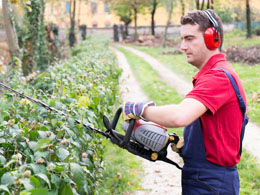Vegetative propagation process helps to create new individual plants, without having to use any seeds. Read on to learn the benefits and the various techniques related to propagation.

Propagation is a process where a plant can reproduce asexually with the use of a vegetative part of the original plant. This process can occur naturally. It can also be done manually and is especially beneficial when one wants to create new plants from fruit or vegetable parent plant. Propagation techniques have been used with varying degrees of success in attempts to help developing countries produce larger sources of food for the population.
Advantages
There are many advantages of vegetative propagation, however, there are certain disadvantages too. Many plants when produced can result into overcrowding and lack of nutrients, also the plants produced can be more prone to diseases which are specific to the species of the plant.
- The offspring produced are generally identical, hence, the more beneficial characteristics can be preserved.
- In this gardening process only one parent is required, unlike sexual reproduction methods like pollination.
- Vegetable propagation is faster. For e.g., the bacteria can multiply every 20 minutes, which helps the organism to increase their number at a faster pace; in cases where the number of species are depleted due to certain reasons like diseases.
- Many plants produced are able to suffice during unfavorable conditions. This is due to the presence of organs which help in asexual reproduction like bulbs and tubers.
- This process of propagation is especially beneficial to horticulturists and agriculturists, as they can raise various fruits and vegetable plants without requiring to buy seeds.
- With modern techniques of tissue culture combined, one can grow virus-free plants.
Methods
Many methods are used for propagation, given below are some of the most used techniques.
Grafting: This method of plant or tree grafting is used for inserting a piece of stem with buds (scion) into the stock. The types of grafting are whip grafting, cleft grafting, bark grafting, green grafting, T-budding, inverted T-budding, and chip budding.
Layering: Air or ground layering technique is done by using a portion of an aerial stem growing roots while it is still attached to the parent plant, and then this plant is detached and grown as an independent plant.
Division: In this method of propagation the plant is broken into two or more parts, and both the root and crown of each part is kept intact. This is an ancient technique and is used for propagating bulbs.
Cuttings: Propagating plants from cuttings is also called striking or cloning in which a piece of plant containing at least one stem cell is placed on suitable medium like soil, potting mix, or rock wool. This cutting helps to produce new roots, stems, or both and develops into a new plant.
Using Stolons: Stolons or runners are the stems which grow underground to form new plants at the end of the nodes. These are stems that grow just under the ground, these runners have the capacity of producing new clones of the same plant from the buds at the tips. The stolons can be cut and then planted as separate individual plants.
Twin Scaling: This method is used by professional growers and skilled amateurs to increase the growth of bulbs, that propagate naturally but very slowly. The dormant bulb is cleaned and sterilized. Then this bulb is sliced cleanly from top to bottom several times to create 8 to 16 segments. The number of segments created depends upon the size of the bulb. Then these tiny bulbs are planted into pots or trays and allowed to grow for a year or more till they can survive in individual pots or open ground.
Micropropagation/Tissue Culture: Wondering, what is plant tissue culture? This method is practiced to multiply a stock plant at a rapid rate to produce a large number of progeny plants using the modern plant culture methods.
This was all about vegetative propagation, its advantages, and the various methods used for performing propagation. If you want to propagate a plant, then buy a grafting kit and start with an easy method like layering or grafting to propagate the plant.






 Propagation is a process where a plant can reproduce asexually with the use of a vegetative part of the original plant. This process can occur naturally. It can also be done manually and is especially beneficial when one wants to create new plants from fruit or vegetable parent plant. Propagation techniques have been used with varying degrees of success in attempts to help developing countries produce larger sources of food for the population.
Propagation is a process where a plant can reproduce asexually with the use of a vegetative part of the original plant. This process can occur naturally. It can also be done manually and is especially beneficial when one wants to create new plants from fruit or vegetable parent plant. Propagation techniques have been used with varying degrees of success in attempts to help developing countries produce larger sources of food for the population.